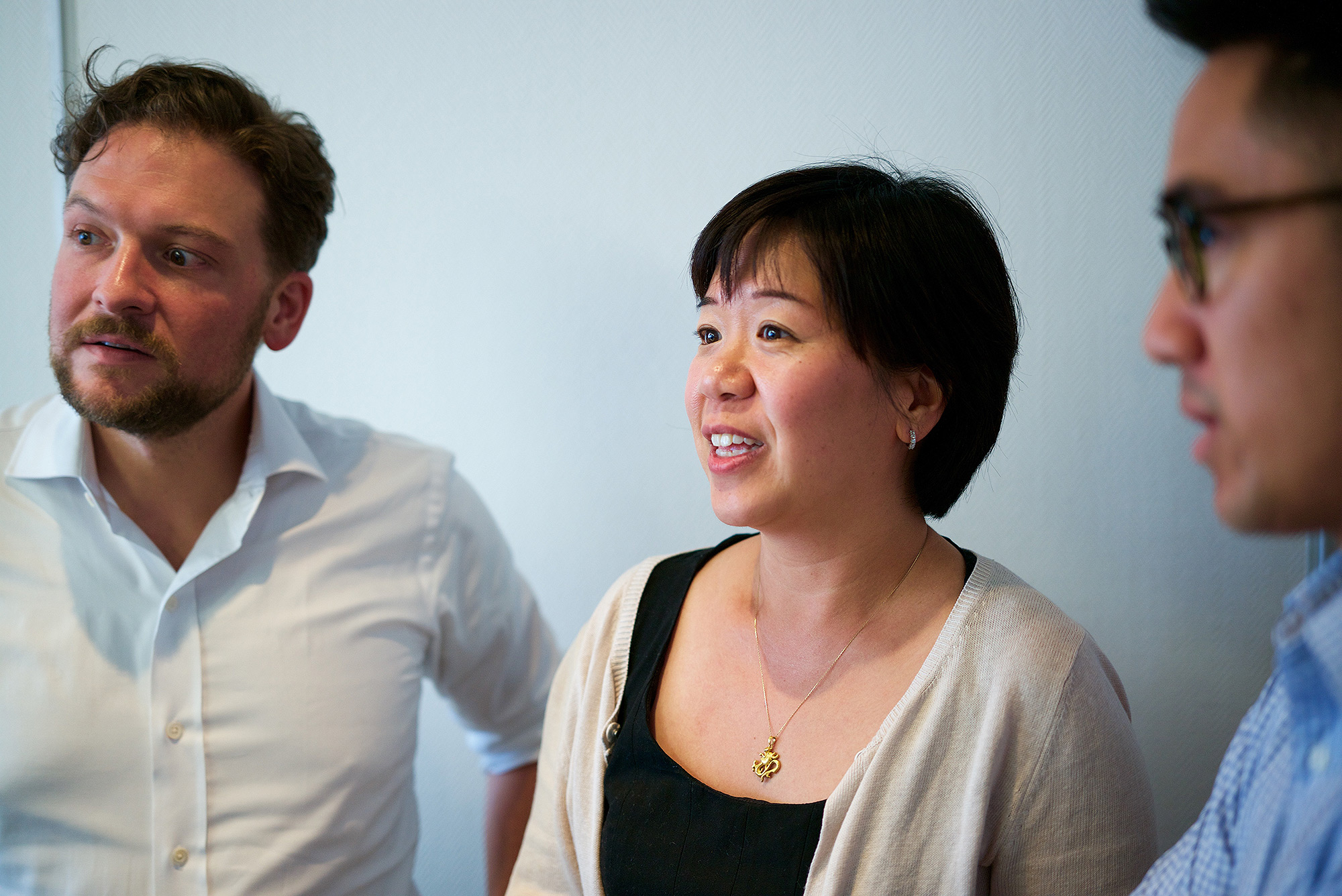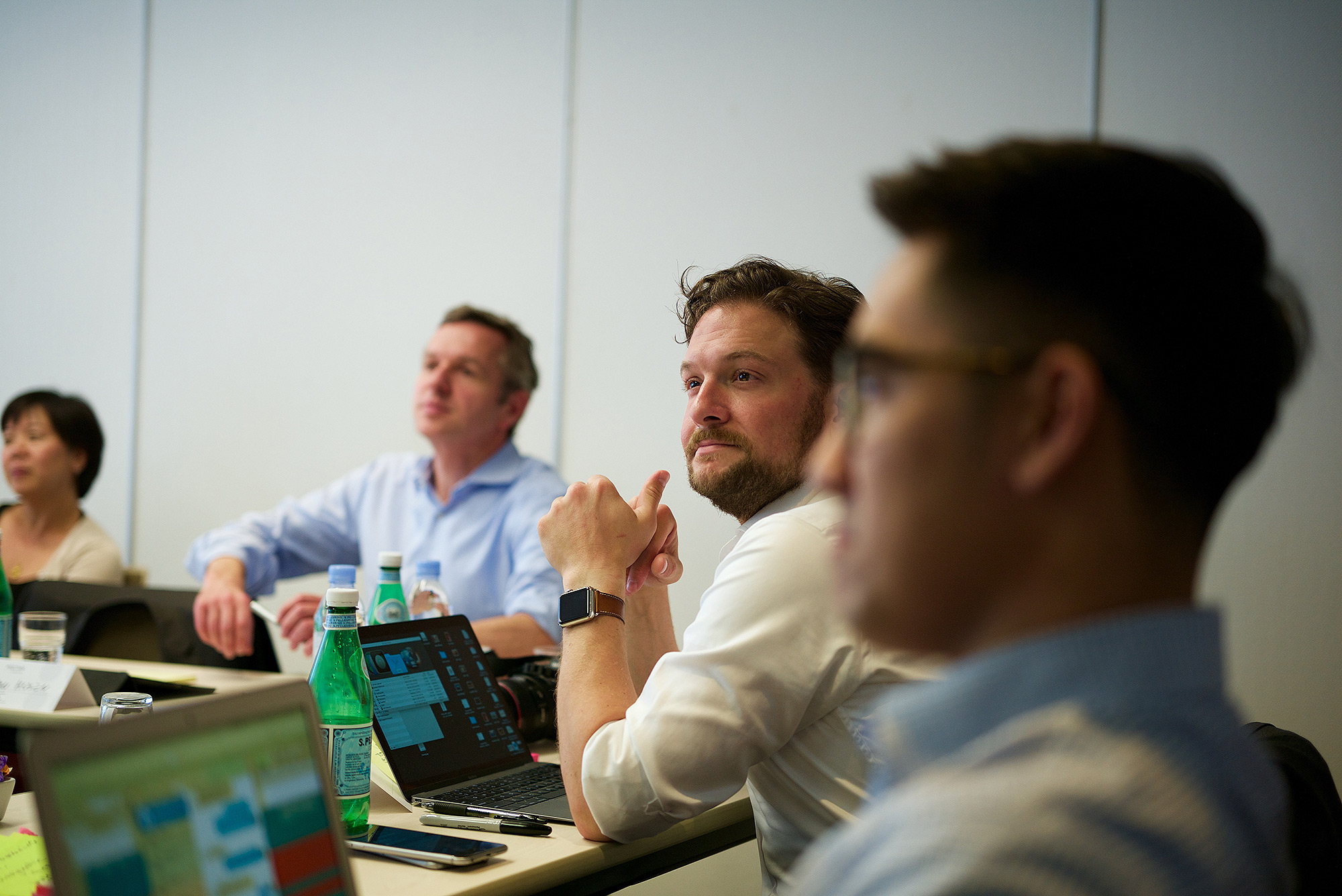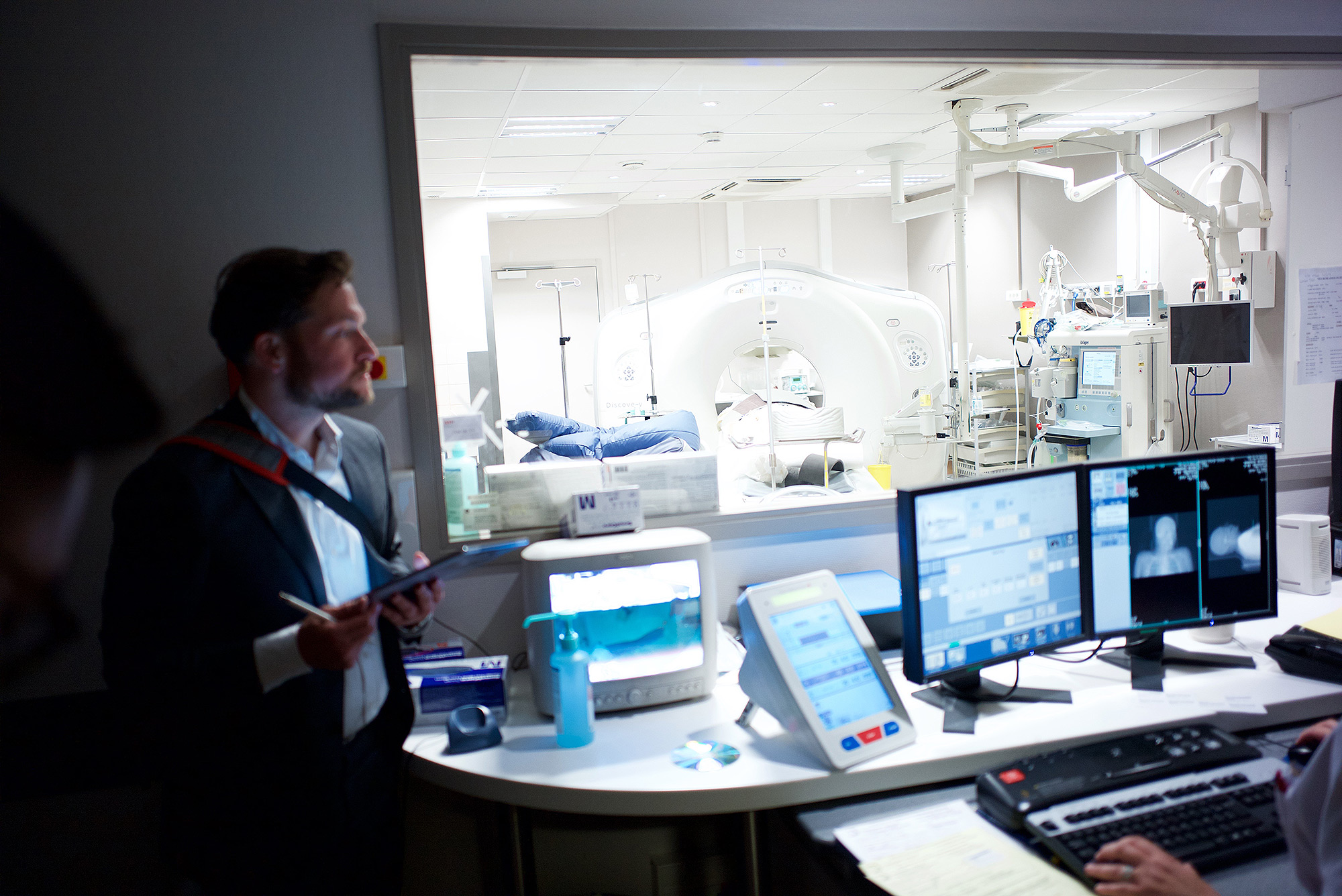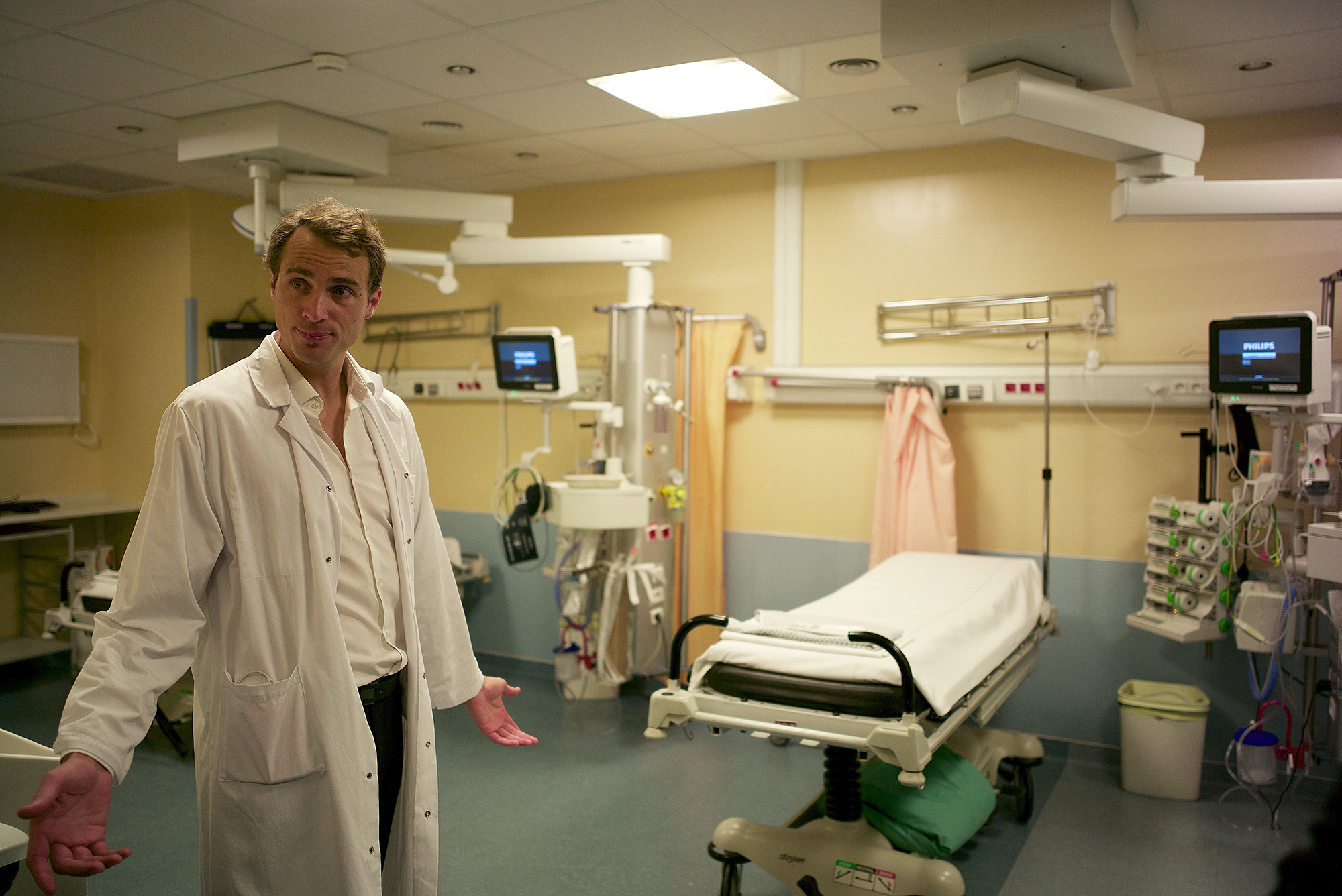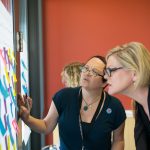improving stroke care with an Everyone Included™ design team
Date: November 2016
The problem we were trying to solve
Boehringer Ingelheim is a world-leader in pharmaceutical drug development and ranks among the top 20 pharmaceutical companies in the world. The BI corporate vision of “Value through Innovation” as well as its “Lead & Learn” model of collaboration have been key drivers of innovation in the organization. Using these principles, Debbie Lin has created a successful Stroke Care Optimization project at BI that is now deployed at many sites globally.
There is a need for better real time tracking of patients’ door to needle time (DNT) starting at recognition of their stroke symptoms. By more closely measuring DNT, health care providers (HCPs) can better administer acute stroke treatment to the patient. Evidence based guidelines specify that acute stroke treatment must be administered within a 4-hour time window of a patient having a stroke in order to prevent major neurological disability. A technology that could enable improvement of real time management of stroke by improving DNT could improve stroke outcomes.
Research approach and methods used
The stroke tracker project was one of our first Medicine X Studio projects, a fascinating endeavor exploring how a diverse stakeholder mix of designers, providers, industry, and patients might work together to design novel, effective, and meaningful interventions in stroke care.
This methodology, also known as Everyone Included™, was an opportunity to explore the practical dimensions of design thinking, working in interdisciplinary teams, and collaborating across time zones, continents, and cultures.
In phase one of our project, our Stanford Medicine X Studio Team conducted deep-dive interviews with members of the Stanford Stroke Care Team, including Robert Dodd, MD, Assistant Professor of Neurosurgery, researcher Prasanthi Govindarajan, MD, Associate Professor of Emergency Medicine, and Stroke Team Manager Stephanie Casal, MS, RN,CNS. We also conducted a broad literature review on pre-hospital, in-hospital stroke management outcomes.
Afterwards, we conducted further in situ research in Montpelier, France–one of the most advanced stroke care centers in the world. In both settings, we wanted to learn more about the stroke team’s needs and challenges–what types of issues were they facing at different points in a stroke patient’s transport from their home to the hospital?
After collecting this primary research, we convened a day-long design workshop, ideating potential prototypes for a stroke tracker device with medical professionals from Montpellier France.
In phase two of our project, we took our findings and prototypes from Montpelier back to Stanford, and further flushed out potential features, high-level concepts, and high-priority goals. This phase was especially challenging, as we had to decide as a team which factors were most paramount in decreasing door to needle time for stroke patients.
In phase three, we tested our concepts and prototypes real-time in the Stanford University School of Medicine simulation center. This gave us the opportunity to quickly validate our pre-conceived notions with regards to stroke care in a life-like scenario, which ended up also producing some new and especially impactful solutions.
Key learnings
Overview:
After conducting primary research with the Stanford Stroke team, Montpellier stroke team, and two design sessions, the Stanford Medicine X Studio team has identified the following design principles that will most effectively track DNT and create a sense of urgency for stroke teams.
Goals and Expectations:
In our primary research, we found that the core themes and most relevant concerns from stroke team members included sense of urgency, communication, time tracking, and team readiness. As a result, our recommendations for a stroke tracker should meet these requirements while integrating seamlessly with the current hospital workflow.
This stroke tracker should not be a diagnosis tool. This tool may influence diagnosis and decision-making indirectly, but its primary function is a patient and decision tracking device that will passively feed data into the ANGELS platform. This workaround will give engineering teams the opportunity to design, build, and implement a device without necessity for FDA/official medical device clearance.
Data Resolution
In our primary research and simulation, we found that the stroke team has an extremely high cognitive load at the first medical contact with the stroke patient.
We highly recommend that this stroke tracker device require minimal engagement and low effort intensity from the medical team, especially from nurses and doctors involved in hands-on care, as they are occupied with tending to the stroke patient. Other team members, such as CT techs, pharmacists, or radiology can still have some degrees of freedom, allowing for simple interactions with a stroke tracker device (e.g., pushing simple messages, acknowledging receipts of notifications, etc.). Therefore:
- A visual interface may not be necessary for the device on the stroke patient.
- An administrator or medical team leader may have a mobile application on a smartphone device or hospital transport monitor, which may serve as a digital “hub” for the stroke team.
Physical Form
To inform our findings of desired minimal engagement and low effort intensity from the medical team, the design team recommends that participating hospitals implement a beacon system that passively captures location data for stroke patients. This comprehensive beacon system would capture location/checkpoint data, requiring minimal to no input from the medical team. Beacons could be placed on:
- Patient’s ankle or wrist
- Hospital gurney: A beacon on both the patient and gurney can passively notify the medical team when the patient is separated from the gurney (indicating the start and finish of a CT scan, for example)
- Major checkpoints during the patient workflow, such as the CT scanner, ER bay, etc.
Furthermore, in our simulation session, our studio team found that a “stroke kit” would be most effective to keep the team adequately prepared for an incoming stroke patient. This kit could include the tracker bracelet for the stroke patient, a “security blanket” to provide a sense of comfort for the patient and create a visual sense of urgency for the stroke team, and other supplies that the team may deem necessary for stroke cases. We found that this kit would address a few concerns:
High cognitive load for medical team–a prepackaged kit would remove the need for the team to scramble and collect supplies Team communication/formation–a prepackaged kit would also give team members to physically congregate, distribute supplies, and form a “huddle” before the patient arrives.
Other findings: The patient’s clothing may be removed during first medical contact, which requires that the stroke tracker be some form of bracelet worn on the wrist or ankle. An ankle bracelet may be ideal to avoid interference with the MRI machine.
Summary
The primary functions of this device should be data capture, facilitation of medical team communication, and elevation of a sense of urgency. By sticking with the core themes identified in our research and design process, we believe that Boehringer Ingelheim, the engineering team, and the participating hospitals have the greatest opportunity for success.
Medicine X | Studio, is the world’s first Everyone Included™ health care design studio. Its purpose is to advance the Medicine X Everyone Included™ framework for health care innovation and our principles for health care co-design with patients, caregivers, providers and end-users of health care. At Medicine X | Studio, we implement these principles and incorporate codified standards through our design projects with the goal of co-designing for a culture of health.
project team members
Larry Chu, MD – Medicine X (Facilitator, Physician Input)
Nick Dawson, MHA – Medicine X Project Designer
Kyle Harrison, MD – Medicine X Simulation Testing Expert
Justin Lai, MPH – Medicine X Studio Lead
Sarah Jiang – Medicine X Design Associate
Aleksandra Sarcevic, PhD – Medicine X HCI/Technology Expert
Site locations: Stanford, California (USA), Montpellier (France)
collaborating organization
Boehringer Ingelheim (Debbie Lin). Boehringer Ingelheim is one of the pharmaceutical industry’s top 20 companies and to this day remains family-owned. Day by day, some 50,000 employees create value through innovation for the three business areas human pharmaceuticals, animal health and biopharmaceutical contract manufacturing. With more than three billion euros, R&D expenditure corresponds to 19.6 per cent of net sales.



